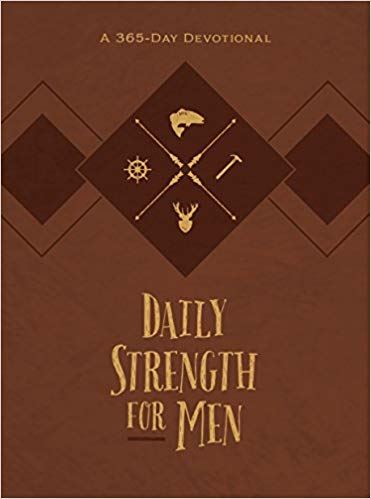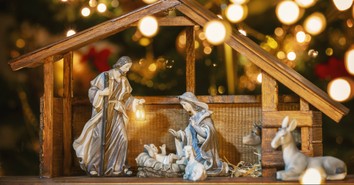Hope for All: Jesus Makes Leaders out of Knuckleheads

A long time ago, I got to be a disciple.
I was a member of an 80-person choir called the Asaph Ensemble. A few times a year, we sang pieces such as Handel’s Messiah at various venues in the Washington, D.C. area.
One summer, we got word that we were going to perform an opera written by and starring Jerome Hines, a famous bass from the Metropolitan Opera in New York City. We would start with two performances of the opera, called I Am the Way, at George Mason University that fall. The following summer, we would do two more performances at the Bolshoi Theatre in Moscow.
The one in Russia.
This was exciting stuff for a hack singer such as me. I had never been to an opera, and now I was going to be in one. My excitement grew when I got cast as a disciple. Not one with solos – those roles were reserved for professionals who, like Hines, were joining us from the New York Met – but a disciple nevertheless. As a disciple, I would be onstage for most of the opera and sing some special parts with the other disciples.
I Am the Way was really challenging for me. I had to memorize all of my vocal parts, which were scattered throughout nearly four hours of music. I had to pay close attention to cues from the other performers, or I would come in at the wrong time and have an unintentional solo. And I had to move around the stage to help act out certain scenes, such as the resurrection of Lazarus.
Fortunately, we practiced. A lot. And the more I practiced being a disciple, the more I realized that the disciples of Jesus were…well…kind of clueless.
Frankly, they were knuckleheads.
12 Knuckleheads
I Am the Way, which tells the story of Jesus, is based on the Gospel of John. The climactic scene in the opera is the Last Supper, from John chapters 13 and 14.
The night before his crucifixion, Jesus had his last meal with his closest friends, the 12 men who had spent three years traveling with him. They had watched him perform unbelievable miracles: walking on water, calming a storm, healing the sick, and even raising the dead. They had heard countless teachings from him, both in public forums and in private settings. They had asked him pointed questions. He had told them plainly who he is and what his mission on earth is.
And they didn’t get it.
Several times, Jesus had told his disciples that, when they got to Jerusalem, he would die, as a sacrifice, but on the third day after his death he would rise from death and live again.
The Last Supper took place in an upper room, After Judas left the room (to go betray Jesus), Jesus told the other disciples that the time had come for him to be glorified. “Where I am going,” he added, “you cannot come.”
“Lord, where are you going?” asked Peter.
A few minutes later, Jesus explained that his Father's house, heaven, has many rooms. Jesus said that he was going there to prepare rooms for the disciples and others. “I will come again and will take you to myself,” Jesus added, “that where I am you may be also.And you know the way to where I am going.”
But the disciples had no idea what Jesus was saying. Speaking for the rest, Thomas said, “Lord, we do not know where you are going. How can we know the way?”
Ever patient, Jesus replied, “I am the way, and the truth, and the life. No one comes to the Father except through me.If you had known me, you would have known my Father also. From now on you do know him and have seen him.”
But they still didn’t understand, so Philip chimed in, “Lord, show us the Father, and it is enough for us.”
Three years. They had been with Jesus, every day, for three years. That’s over 1,000 days of watching his every move and hanging on his every word. And they still had no idea who Jesus was.
A few hours later, when Jesus was arrested, the disciples scattered.
Peter denied three times that he even knew Jesus.
Only John was there when Jesus was crucified.
Judas committed suicide, and the other 11 went into hiding, refusing to come out until the risen Jesus appeared to them, in person, and proved that he was alive.
Less than two months later, they started the Church.
Here are three examples of how the disciples went from knuckleheads to leaders.
Peter: From Failure to Rock
His name was Simon, son of Jonah. Jesus had given him a new name: Peter, which means “Rock.” And Jesus said that he would build his church on that rock! But in the hours after the Last Supper, the rock became a failure.
A huge band of soldiers arrested Jesus. Peter tried to fight for his leader, even grabbing a sword and cutting off the ear of the high priest’s servant. When Jesus did not fight, however, Peter fled the scene.
He followed Jesus and the soldiers at a distance. When they reached the high priest’s house, Peter joined others at a fire in the courtyard. A servant girl challenged him, saying that he was with Jesus. Peter denied it. Someone else said that Peter was “one of them.” “Man, I am not,” Peter snapped back An hour later, another person, catching Peter’s Galilean accent, insisted that Peter was a follower of Jesus. Peter invoked a curse on himself and swore that he didn’t know Jesus.
A rooster crowed. Peter had denied Jesus three times, just as Jesus had predicted. Peter ran out of the courtyard, wept bitterly, and went into hiding.
All of the disciples were overjoyed when Jesus rose from the dead. But the shame of his denial hung over Peter and paralyzed him. He began to retreat into his former life as a fisherman.
But Jesus wouldn’t let him. After orchestrating a miraculous catch of 153 large fish, Jesus pulled Peter aside and, lovingly but firmly, dealt with Peter’s three denials. Jesus ended the conversation with the same two words that had started Peter on his amazing three-year odyssey with Jesus: “Follow me.”
The sin? Forgiven. The shame? No more. The Rock? Restored.
Empowered by the Spirit at Pentecost, Peter became the leader of the Church.
Philip: The First Evangelist
When Jesus called him, Philip followed willingly and even recruited Nathanael, telling him that Jesus was the Messiah. But three years later, at the Last Supper, Philip seemed confused as to who Jesus really was.
The resurrection of Jesus opened Philip’s eyes to the real identity of Jesus. And Pentecost gave Philip a job to do.
When Saul ignited a great persecution of Christians in Jerusalem, Philip ended up in Samaria, where he proclaimed Jesus as the Messiah and performed miracles. Philip’s work in Samaria had such an impact that the apostles in Jerusalem sent Peter and John to Samaria to reinforce and strengthen Philip’s efforts there.
Then an angel directed Philip to a road to Gaza, where Philip met a eunuch who was a court official of the queen of the Ethiopians. After Philip explained that Jesus is the Messiah who fulfilled all prophecies, the eunuch became a Christian. As soon as he baptized the eunuch, Philip was transported 15 or 20 miles to Azotus, a city on the Mediterranean Sea. Starting there, he preached the Gospel along the coast, all the way to Caesarea, 50 miles north. And he converted many on the way.
A confused follower became the first evangelist outside Jerusalem. All that it took was committing his life to God.
John: From Apprentice to Late-in-Life Leader
You might not think of John as a knucklehead. After all, he was part of the Jesus’s inner circle, along with his brother James and Peter. While Peter denied Jesus three times and fled, John was present for the crucifixion, where Jesus commanded him to care for Jesus’s mother, Mary. And, of course, John wrote the fourth Gospel.
But John was a blockhead sometimes.
Like the time he stood back and allowed his mother to ask Jesus if James and John could sit on Jesus’s left and right hands in the kingdom. Or the time when a Samaritan village rejected Jesus and James and John asked Jesus, “Lord, do you want us to tell fire to come down from heaven and consume them?”
After Jesus rose from the dead and ascended into heaven, John seemed to live in Peter’s shadow. Whenever John is mentioned in the Book of Acts, he is at Peter’s side. The book records no action that John did on his own or statement that he made on his own.
Whereas Peter was recognized as the leader of the Church in Jerusalem, John likely was seen as Peter’s apprentice. And he remained in that role for several decades
So what happened when Peter was killed, crucified upside down? When the Apostle Paul, who had been spreading The Way throughout Asia and Europe, was beheaded? When the other leaders of the early Church were martyred, one by one, leaving John as the only disciple still alive?
John stepped up and led.
He wrote his Gospel, establishing himself as a credible and trusted eyewitness, “the disciple whom Jesus loved,” and the first disciple to witness the empty tomb (beating Peter there in a footrace). He wrote other letters to strengthen fledgling Christian churches and to battle against heresies that were arising. And he wrote down a revelation from Jesus, the Book of Revelation.
It took John over 30 years to do it, but he became the leader of the Church, a leader desperately needed during a period of intense persecution.
We’re All Knuckleheads
Nearly 2,000 years later, it’s easy for us to look at early Church leaders such as Philip, Peter, and John and see them as pillars of the faith. Bold, fearless men who always did the right thing. Supermen of old.
But they were ordinary men. Men who made mistakes. Men who sometimes were knuckleheads.
The Bible is filled with such men. Consider these examples:
- Abraham:Twice when he was afraid, he said that his wife Sarah was his sister.
- Judah:He slept with his daughter-in-law because he thought she was a prostitute.
- David:He slept with the wife of a loyal military officer, got her pregnant, and then had the officer killed.
- Solomon:He married hundreds of foreign women, clung to them, and allowed them to turn his heart away from God.
God turns knuckleheads into leaders. Even into heroes. He did it throughout the Bible. And He does it today.
There’s hope for all of us.

Photo Credit: ©Thinkstock/Chalabala
Originally published April 23, 2019.







